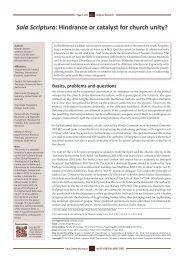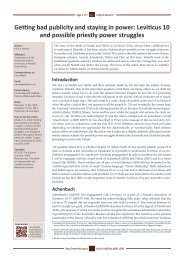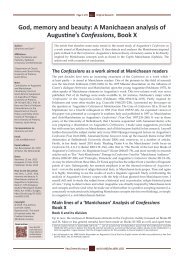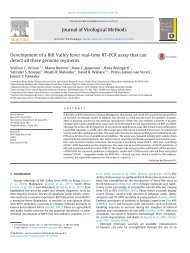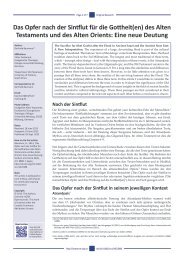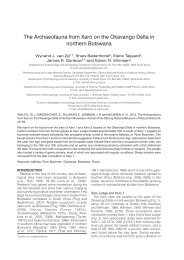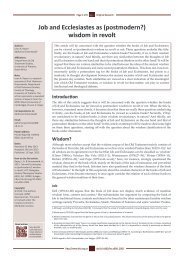View/Open - University of Pretoria
View/Open - University of Pretoria
View/Open - University of Pretoria
You also want an ePaper? Increase the reach of your titles
YUMPU automatically turns print PDFs into web optimized ePapers that Google loves.
Table 5: Table <strong>of</strong> subtest intercorrelations (TALPS final draft version) UP& UNW Combined<br />
Subtest<br />
Total Test<br />
Subtest(s)<br />
1<br />
Subtest(s)<br />
2<br />
Subtest(s)<br />
3<br />
Subtest(s)<br />
4<br />
Subtest(s)<br />
5<br />
Subtest(s)<br />
6<br />
Scrambled text 1 0.47<br />
Graphic & visual<br />
literacy 2 0.78 0.30<br />
Academic<br />
vocabulary 3 0.61 0.35 0.39<br />
Text types 4 0.37 0.26 0.22 0.19<br />
Understanding<br />
texts 5 0.81 0.17 0.64 0.39 0.20<br />
Grammar & text<br />
relations 6 0.82 0.32 0.54 0.41 0.23 0.54<br />
Text editing 7 0.77 0.32 0.49 0.41 0.20 0.54 0.60<br />
Subtest(s)<br />
7<br />
Number <strong>of</strong> testees : 272 272 272 272 272 272 272 272<br />
Number <strong>of</strong> items : 76 5 10 10 5 21 15 10<br />
Average test score : 51.88 1.94 6.81 7.44 2.17 17.30 8.74 7.48<br />
Standard deviation : 13.32 1.57 2.77 1.89 1.24 4.19 3.96 2.75<br />
SEM : 3.84 0.78 1.21 1.26 0.87 2.31 1.62 1.05<br />
Average,<br />
P-value : 64.84 38.75 68.13 74.38 43.38 69.19 58.28 74.78<br />
Coefficient Alpha : 0.92 0.76 0.81 0.56 0.51 0.70 0.83 0.85<br />
GLB : 0.99 0.88 0.89 0.69 0.72 0.85 0.92 0.89<br />
Asymptotic GLB : Na Na Na Na Na Na Na Na<br />
Claim 7: The test displays content validity.<br />
A factor analysis is also useful in determining the content validity <strong>of</strong> the test. According<br />
to the factor analysis above (Fig.1), not all items are related to a single construct<br />
underlying the test. As indicated earlier, it was the decision <strong>of</strong> the test developers not to<br />
exclude these outlying items, the reasoning being that “for an ability as richly varied and<br />
potentially complex as academic language ability, one would expect, and therefore have<br />
to tolerate, a more heterogeneous construct” (Weideman, 2009:237). Leaving out these<br />
outlying items would have increased the reliability <strong>of</strong> the test. The test, however, already<br />
has an excellent reliability measure <strong>of</strong> 0.85. The high reliability <strong>of</strong> the test allows the test<br />
developer the freedom to include these items without compromising the reliability <strong>of</strong> the<br />
test or the construct.<br />
The one other method <strong>of</strong> determining the content validity <strong>of</strong> the test is to get “expert<br />
ratings <strong>of</strong> the relationship between the test items and the content domain” (Kurpius and<br />
Stafford, 2006:147). These experts judge each item to determine “how well it assesses<br />
the desired content” (2006:147). In the case <strong>of</strong> TALPS, members <strong>of</strong> the design team<br />
188<br />
Journal for Language Teaching | Tydskrif vir Taalonderrig



